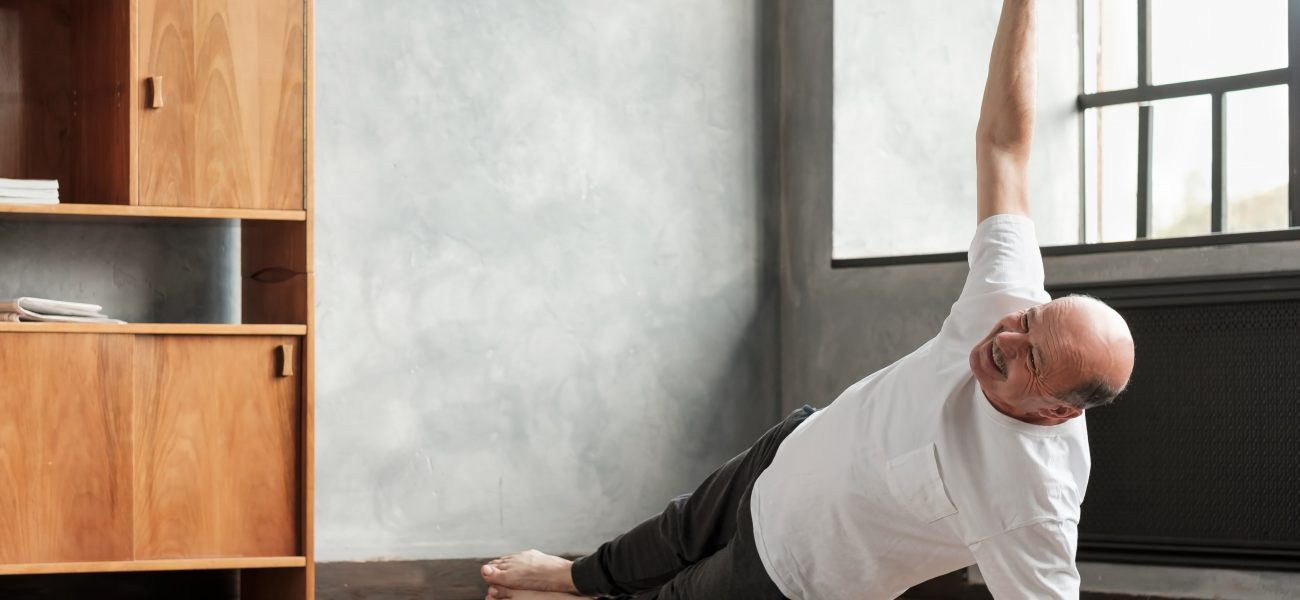Mixed Incontinence in Women and How Can You Treat it?
Incontinence is a common health condition which is often characterized as the inability to control the bladder, which leads to unintentional urine leakage. The severity of this condition varies from person to person and depends upon the type of incontinence.
One such type is mixed incontinence in women. It is a well-known fact that an overactive bladder is more frequently found in women than in men for reasons like pregnancy, old age, menopause, etc. Precisely, mixed incontinence is related to the condition in which a person faces the symptoms of two or more types of continence problems. Generally, these two types are stress and urge incontinence.
There is no denying that suffering from bladder problems can be frustrating. However, thankfully, there are ways to cope with the uneasiness. For example, women can use pant style adult diapers to save themselves from the worry of social embarrassment.
Similarly, there are certainly other ways that are helpful in managing mixed incontinence and making the lives of the patients better and easier. Let’s take a look at them:
Biofeedback
It is an effective technique to treat the condition of loss of bladder control. Biofeedback therapy helps the patient to see the muscles during the pelvic floor exercise. This is done using computer graphs and audible tones. To be specific, two tiny sensors are placed on either side of the anus where the pelvic floor muscles are in close proximity to the skin. The sensors are then connected to the computer screen displaying the graph of the muscles when exercised. Furthermore, the exercises are done under a doc’s supervision to ensure that the techniques are being done correctly and effectively. – Pl add how and where it can be done i.e. under doc’s supervision or physician?
Bladder Training
The bladder training is done to diminish the feeling of urgency and urine leakage. The training helps in increasing the time period between emptying the bladder and holding the amount of fluid in the bladder. In short, the training helps to fix the voiding schedule.
Kegels
Kegels, or pelvic muscle exercises, are helpful in strengthening the pelvic floor muscles. In this exercise, the patient has to squeeze and relax their muscles to prevent the condition from worsening.
Apart from the above-mentioned solutions, there are other kinds of incontinence essentials, such as pant style adult diapers, that give the wearer peace of mind from unintentional urine leakage.
FAQ’s
2. What causes mixed incontinence in women?
Mixed incontinence is caused by a combination of different factors affecting the bladder and pelvic muscles. Common reasons include childbirth, aging, weak pelvic floor muscles, obesity, or surgeries that affect the bladder area. Stress incontinence usually happens because of weak muscles that support the bladder, while urge incontinence may be caused by overactive bladder muscles or nerve problems. When both problems exist together, it is called mixed incontinence. Hormonal changes during menopause, certain medical conditions like diabetes, or even urinary tract infections can increase the chances. Understanding the root cause is important for finding the right treatment. Sometimes, lifestyle habits like drinking too much caffeine or not following a regular bathroom routine may also contribute to mixed incontinence.
3. What are the signs of mixed incontinence?
The main signs of mixed incontinence include leaking urine when coughing, sneezing, laughing, or lifting something heavy—along with a sudden, strong urge to urinate that’s hard to control. A person may feel the need to go to the bathroom urgently and may not make it in time. These two issues happen together and can vary in how often or how strongly they occur. Some women might notice they leak small amounts of urine several times a day, while others may experience larger accidents. It may also cause discomfort in social or work life and can lead to emotional stress or embarrassment. Identifying both types of symptoms helps doctors suggest the best treatment. Keeping a diary of when leaks happen can help track the condition.
4. Is mixed incontinence common in women?
Yes, mixed incontinence is quite common in women, especially as they age or after childbirth. Studies suggest that nearly 30% to 50% of women with incontinence experience mixed symptoms. The risk increases with age, weight gain, menopause, and physical strain over time. Many women are not aware that they have both types of incontinence because they may only notice the more frequent or troublesome symptoms. Some women might think it's just a normal part of aging, but it is a medical condition that can be managed and improved. Mixed incontinence affects the quality of life and daily comfort, so it’s important to speak up and seek advice rather than suffer in silence. Early treatment can make a big difference.
5. How is mixed incontinence diagnosed?
To diagnose mixed incontinence, doctors first ask about the symptoms, like when leakage happens and how often. You may be asked to keep a bladder diary to track urges, leaks, and toilet trips for a few days. A physical exam may be done to check your pelvic muscles. In some cases, doctors may suggest tests like a urine test, bladder ultrasound, or urodynamic testing to understand how your bladder works. These tests are painless and help rule out other problems. It's important to tell the doctor everything, even if the symptoms feel embarrassing. The more the doctor knows, the better the treatment plan. Once both stress and urge incontinence are confirmed, a combination of treatments can be started to manage mixed incontinence.
6. Can mixed incontinence be treated without surgery?
Yes, in many cases, mixed incontinence can be managed or improved without surgery. Doctors often recommend lifestyle changes first, such as weight control, cutting down on caffeine, and timed toilet visits. Pelvic floor exercises (Kegels) can strengthen the muscles that support the bladder, helping reduce leakage. Bladder training techniques can also help you delay the urge to urinate. Sometimes, medications may be given to relax the bladder and reduce sudden urges. A combination of these methods is often used, especially since mixed incontinence involves two types of symptoms. Wearing protective products can also help during the treatment process. Surgery is usually considered only when these non-surgical options do not work. Early treatment gives the best results and helps avoid surgery.
7. What lifestyle changes help manage mixed incontinence?
Simple changes in daily habits can help control mixed incontinence. First, maintaining a healthy weight reduces pressure on the bladder. Drinking enough water is important, but avoid too much caffeine, alcohol, or spicy food as they can irritate the bladder. Try to go to the toilet at regular times—even if you don’t feel the urge. Strengthening your pelvic muscles through daily exercises (like Kegels) can help control leaks. Avoid heavy lifting or straining, and take care to manage coughing or constipation, which can increase pressure on the bladder. Wearing absorbent products can help avoid embarrassment while working on long-term improvement. Tracking your bathroom habits in a diary helps understand patterns. Together, these small changes can make a big difference over time.
8. Are there medications for mixed incontinence?
Yes, some medications are available to treat mixed incontinence, especially the urge-related symptoms. These medicines help relax the bladder muscle, making it easier to control sudden urges. They work best when used along with other treatments like pelvic exercises and bladder training. However, medications may not be as effective for the stress part of incontinence, which is why doctors usually suggest combining different treatments. Not all medicines suit everyone, and some may cause dryness or dizziness. A doctor will check your health history before giving any medicine. Never take over-the-counter products without speaking to a doctor. Medications can help reduce symptoms, but they work best when paired with healthy habits and exercises.
9. When should I see a doctor about mixed incontinence?
You should see a doctor if urine leaks are affecting your daily life, causing embarrassment, or stopping you from enjoying normal activities. Even small leaks that happen often may signal mixed incontinence. If you feel a strong, sudden need to go to the bathroom often, or leak while laughing, coughing, or lifting, it’s worth getting checked. Some people think it's just a part of aging or something to hide, but medical help can improve your comfort and confidence. Also, if you feel pain, have changes in your bathroom habits, or notice blood in urine, it’s important to seek help quickly. Early treatment often leads to better results and avoids further problems. Talking openly with your doctor is the first step.
10. Can exercises really help with mixed incontinence?
Yes, exercises—especially pelvic floor exercises—can help manage mixed incontinence. These exercises strengthen the muscles that support the bladder and help control leaks caused by sudden pressure (stress incontinence). They also train the body to hold urine for longer, which helps with urge incontinence. You can do these exercises at home, and they take only a few minutes a day. A doctor or physical therapist can guide you on how to do them correctly. Results may take a few weeks to show, so it’s important to stay regular and patient. Doing the exercises daily improves muscle control and reduces the chance of leaks. Combined with other habits like bladder training and diet changes, exercises are a powerful way to manage symptoms without medicine or surgery.






















